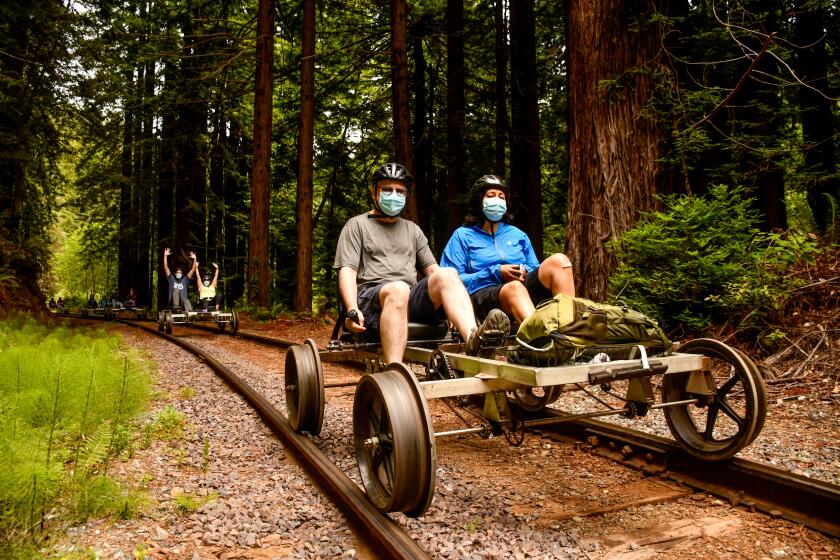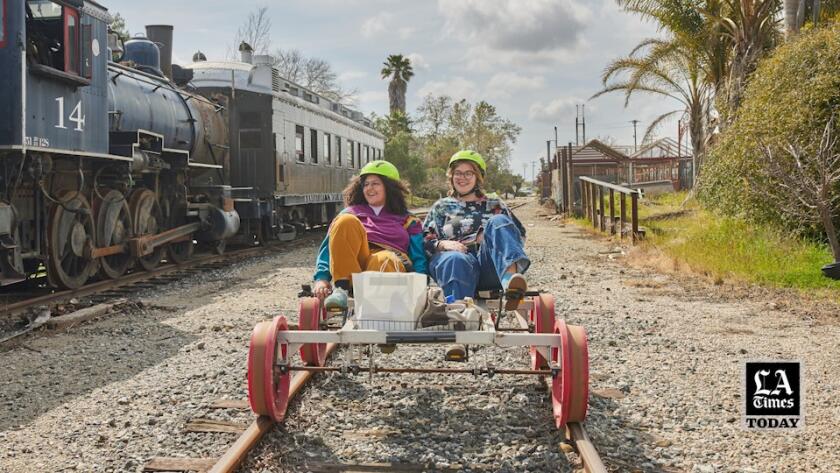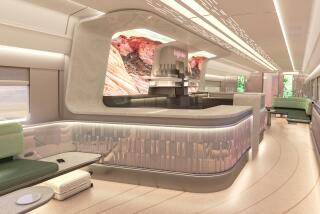- Share via
I never learned how to ride a bike.
Sure, I went through the motions of trying when I was 7 or 8 years old, but the skill never stuck. I suppose the balance needed to steer and maneuver a contraption with two wheels has always evaded me.
But you don’t need balance (or really any skills beyond sitting and wearing a helmet) to take a spin on the Sunburst’s new 17-mile railbike route, which launched this month. Thursday through Sunday, riders can now book two-seat railbikes to explore the citrus and avocado groves on train tracks that run through the Santa Clara River Valley.
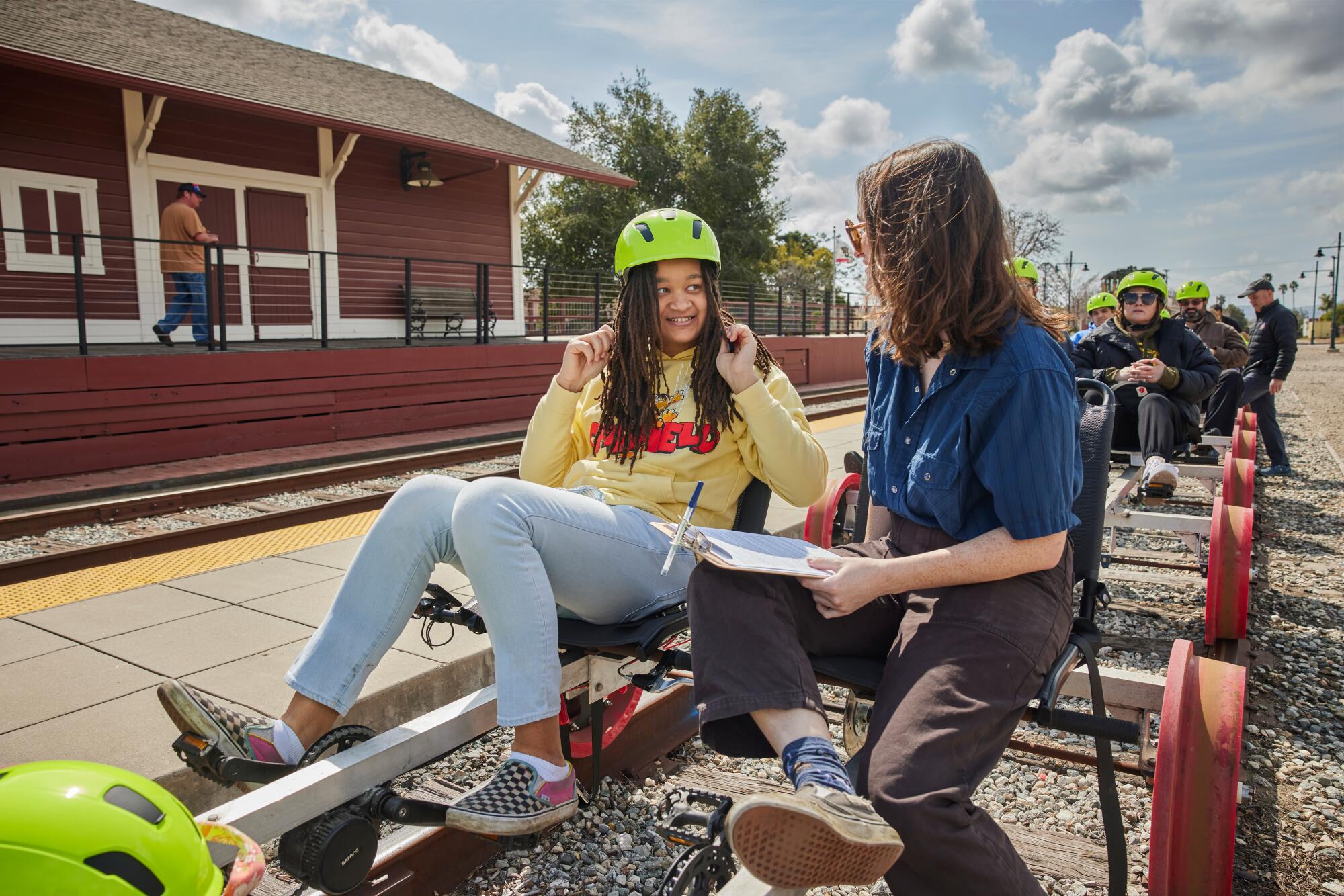
It costs $249 to book a two-seater bike for a three-and-a-half-hour ride, but local residents of Santa Paula, Fillmore and Piru are offered a discounted rate of $186. In Northern California, Mendocino Railway’s steep pricing was criticized back in 2020, when companies increased River Fox Train and Skunk Train tickets by nearly 500% to $250. But the worth of a railbike experience, I suppose, is in the eye of the beholder.
An insider’s travel guide that takes you beyond the mouse ears, selfie spots and Golden Gate Bridge.
Searching for citrus in Santa Paula
To avoid rush hour traffic, I decided to book the Saturday afternoon ride for my partner and me. The Santa Clara River Valley is about 60 miles outside of Los Angeles, so we left the house before 11 a.m. and got back to L.A. around dusk.
The drive north is scenic, especially with all the greenery from this winter’s heavy rain. Once we arrived in Fillmore, we also spotted the only Jamba-Wingstop combo shop I have ever seen.
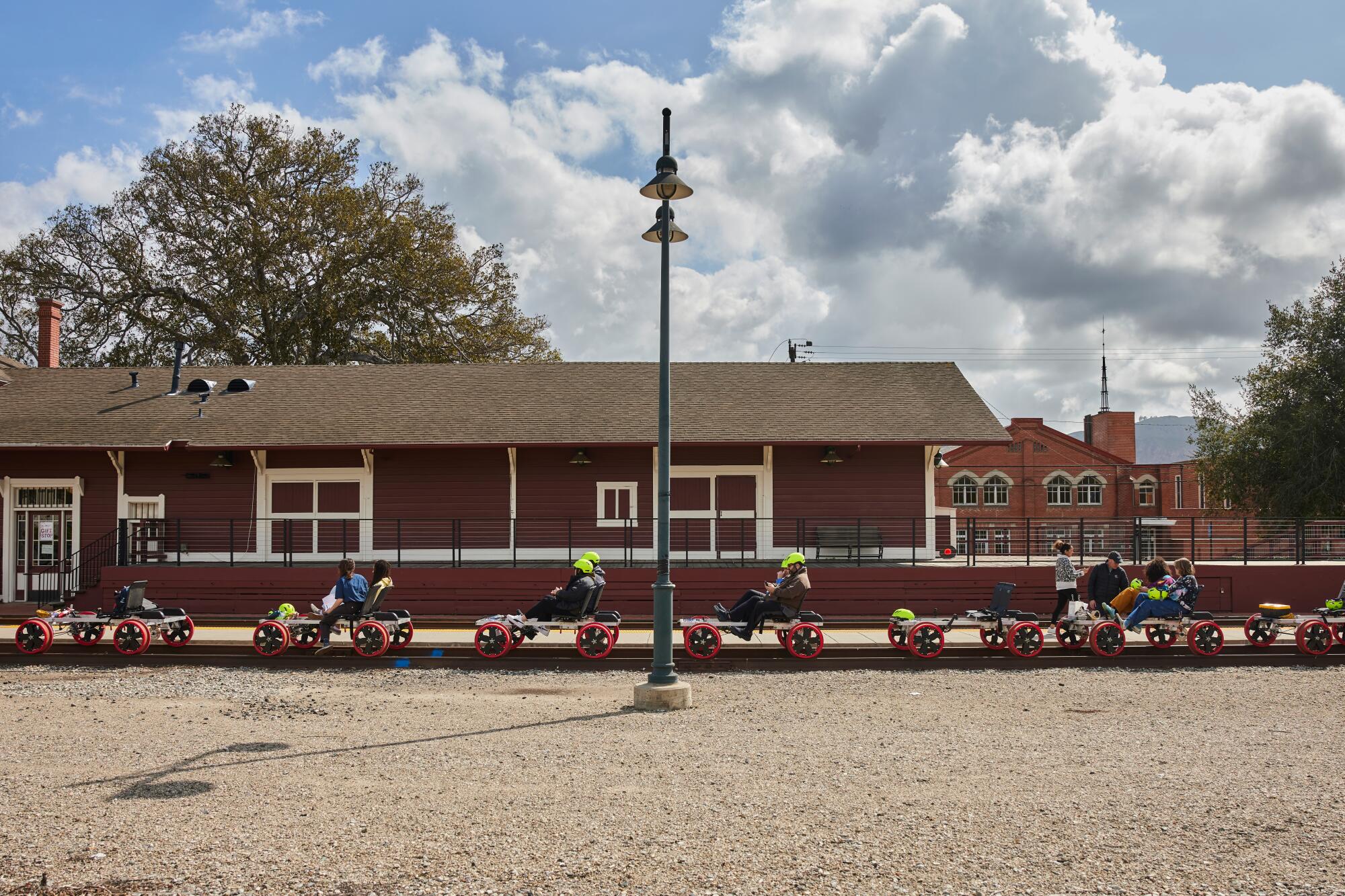
On the tracks of the train depot, we spotted seven go-kart-like apparatuses with big red wheels. Each railbike had two seatbelts, two bright green helmets and one shallow basket that could hold small bags and snacks throughout the ride.
Bike-adjacent inventions that roll atop train tracks have been known by many different names — handcar, draisine, kalamazoo and velocipede are just a few — since they first cropped up around the 1860s. And though these devices were originally made for railroad maintenance, different companies have found ways to turn railbikes into fun, outdoor adventures for train lovers.
Skunk Train Railbikes, part of a nationwide trend, takes riders past redwoods and river waters in Mendocino County.
Robert Jason Pinoli, the president and CEO of Mendocino Railway, said the company’s electric railbikes — which function similarly to electric bikes — are currently patent pending. (Mendocino Railway operates the Sunburst and its railbikes.)
“We didn’t invent the railbike,” he said. “What we did invent, though, was the technology to propel these rail bikes beyond pedal power, the electric assist.”
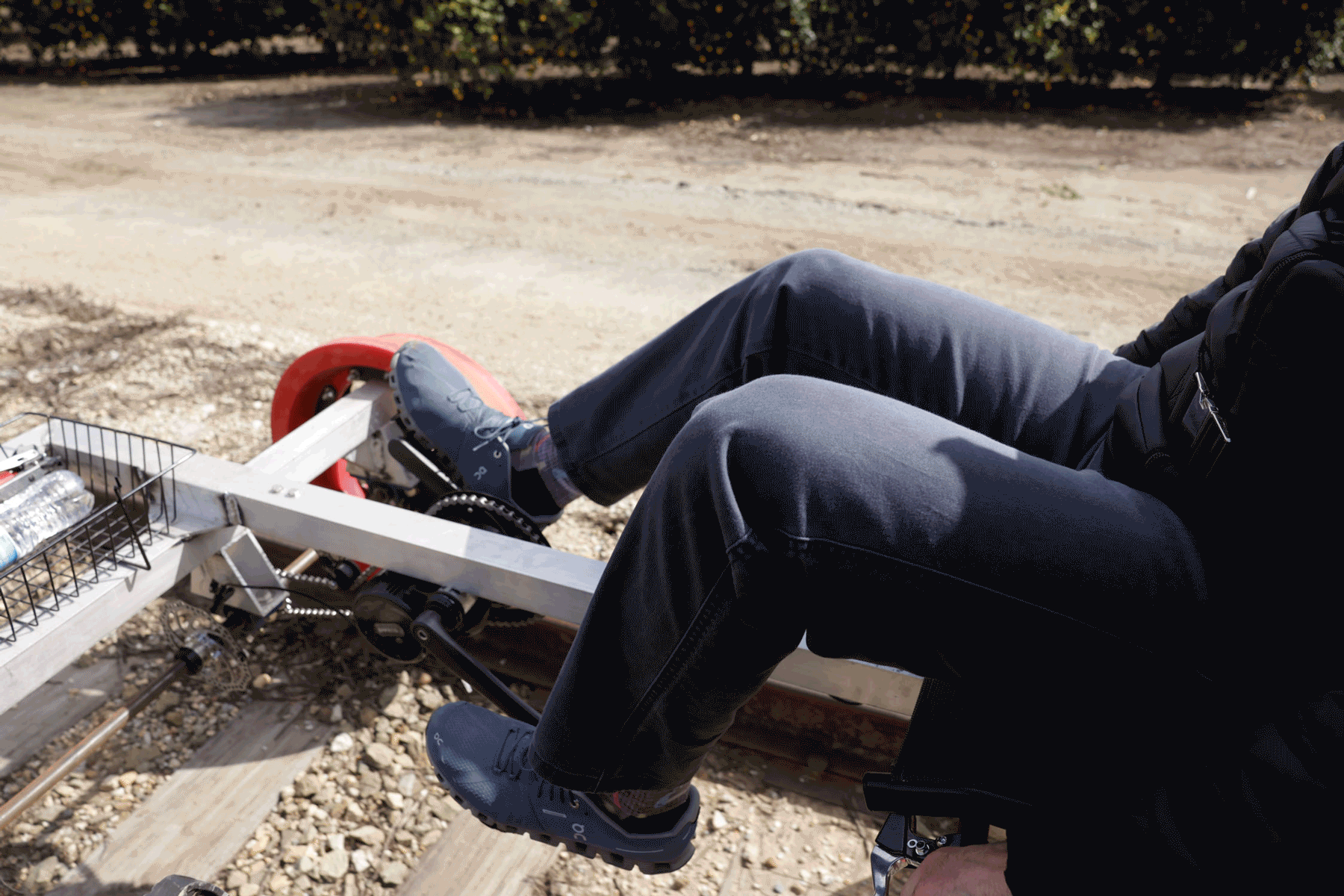
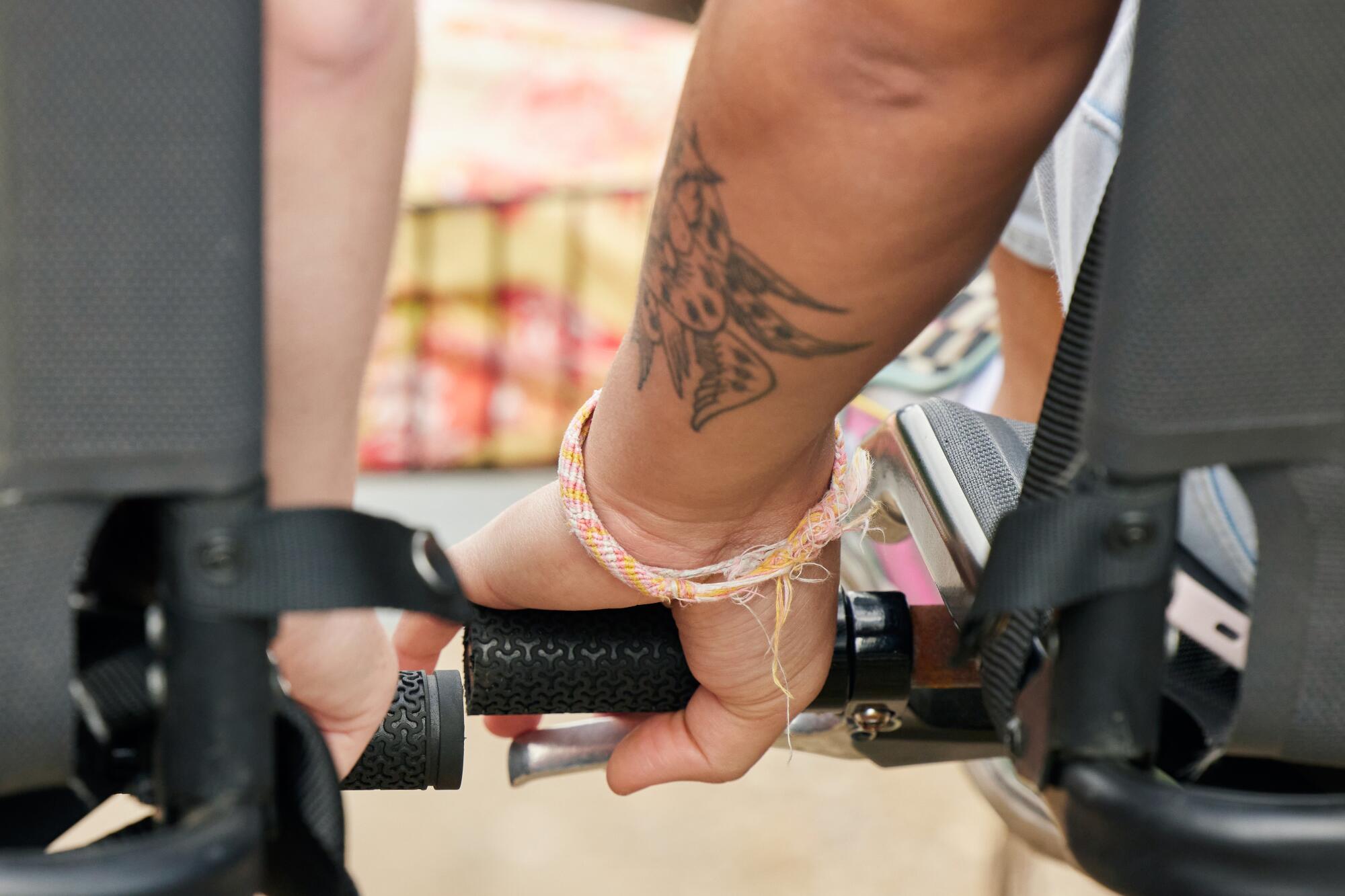
As we settled into our seats, the guides explained how to use the bike’s handbrake, five gears and thumb throttle, which allows you to move without pedaling. The person on the right side of each bike is in charge of setting the bike’s pace and keeping a safe distance from the railbike just ahead of them, since the bikes move as one unit with a guide in the front and a guide at the back of the group.
“If you want to make the pedaling effortless, you can do it,” Pinoli said. “If you want to pedal away, you can turn it down to zero and pedal your heart out.”
As we buckled up and set out on our journey, we immediately encountered our first intersection. Pinoli shared that the guides are able to input a code that activates railroad crossing warning gates before the bikes approach each road. The tracks for the Sunburst’s route cross several active roads including CA-126, which made our line of railbikes quite the spectacle for drivers as they waited for our gates to retract.
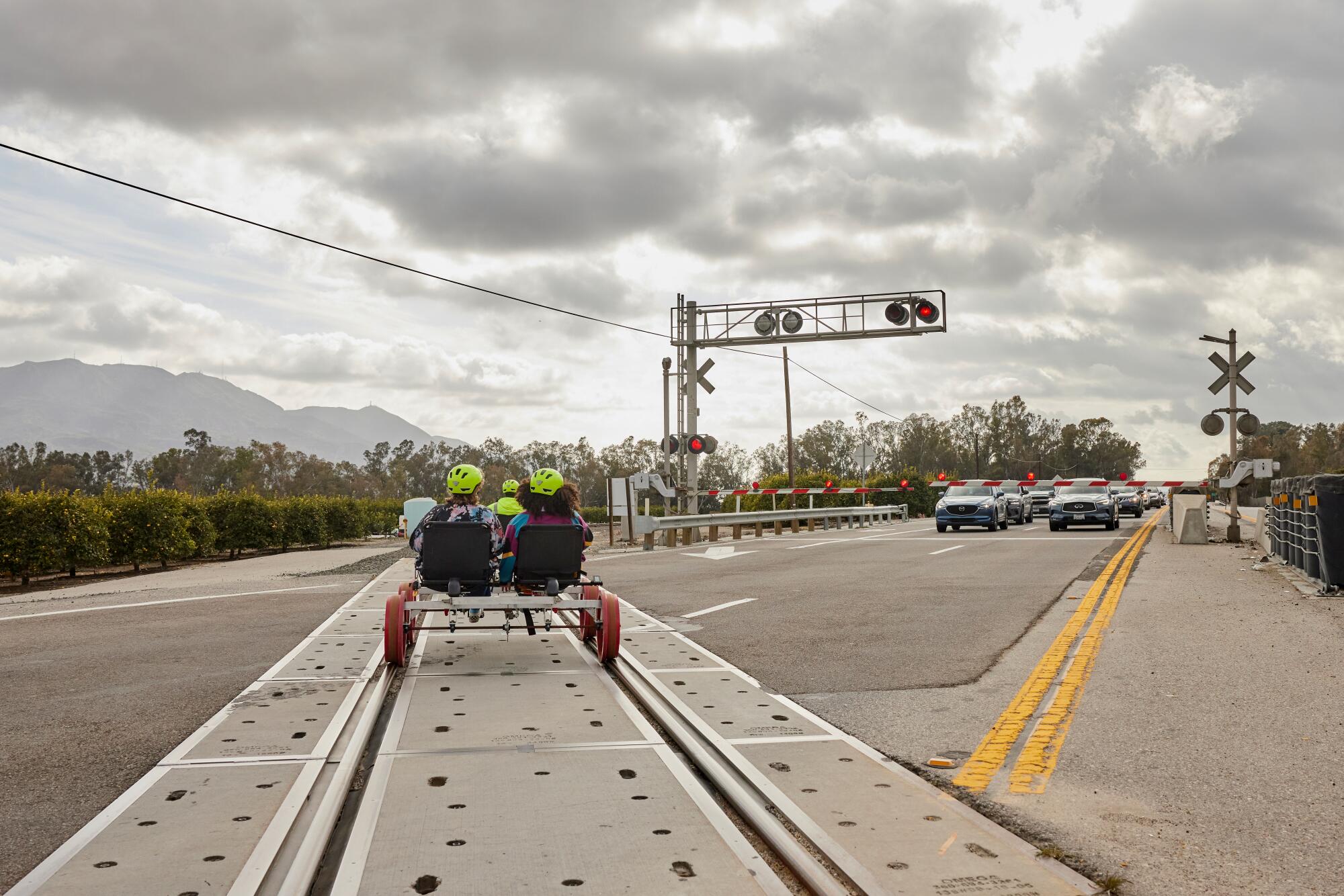
17 miles in the great outdoors, no effort required
There are around 140,000 miles of train tracks in the United States alone — enough track to loop the circumference of Earth more than five times. Most of them are used for utilitarian purposes such as transporting coal, lumber or rocks, but some have been restored and repurposed for entertainment and enjoyment.
In this case, Mendocino Railway proposed a plan to restore the Santa Paula Branch Line, a 32-mile railway corridor that was built in 1887 and is now owned by the Ventura County Transportation Commission.
“This line was originally built by the Southern Pacific Railroad to transport citrus out of the area,” Pinoli said. “We took over operation of the line in 2022, did a bunch of infrastructure work to the railroad, and we are now at the phase where we can actually start running railbikes over it.”
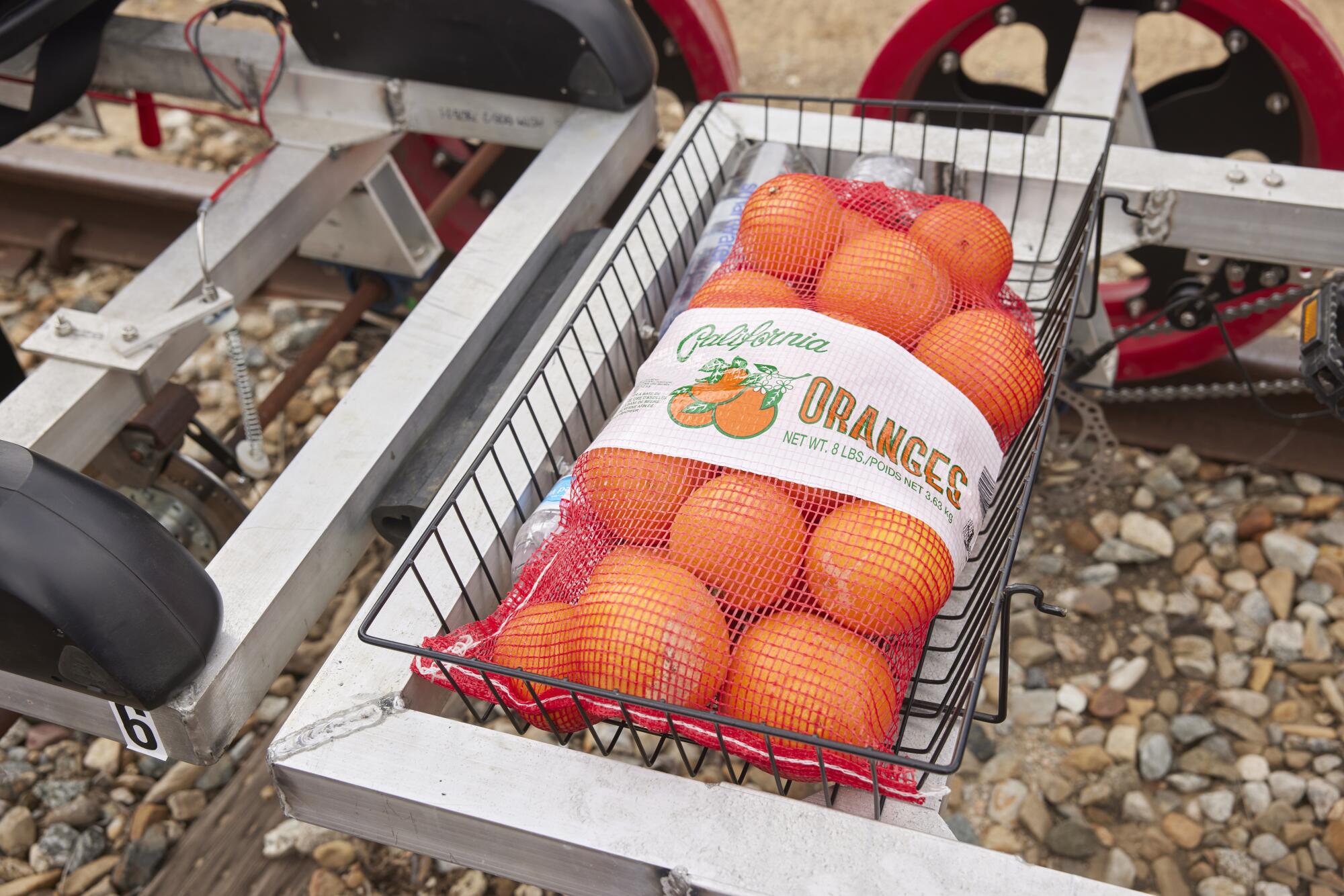
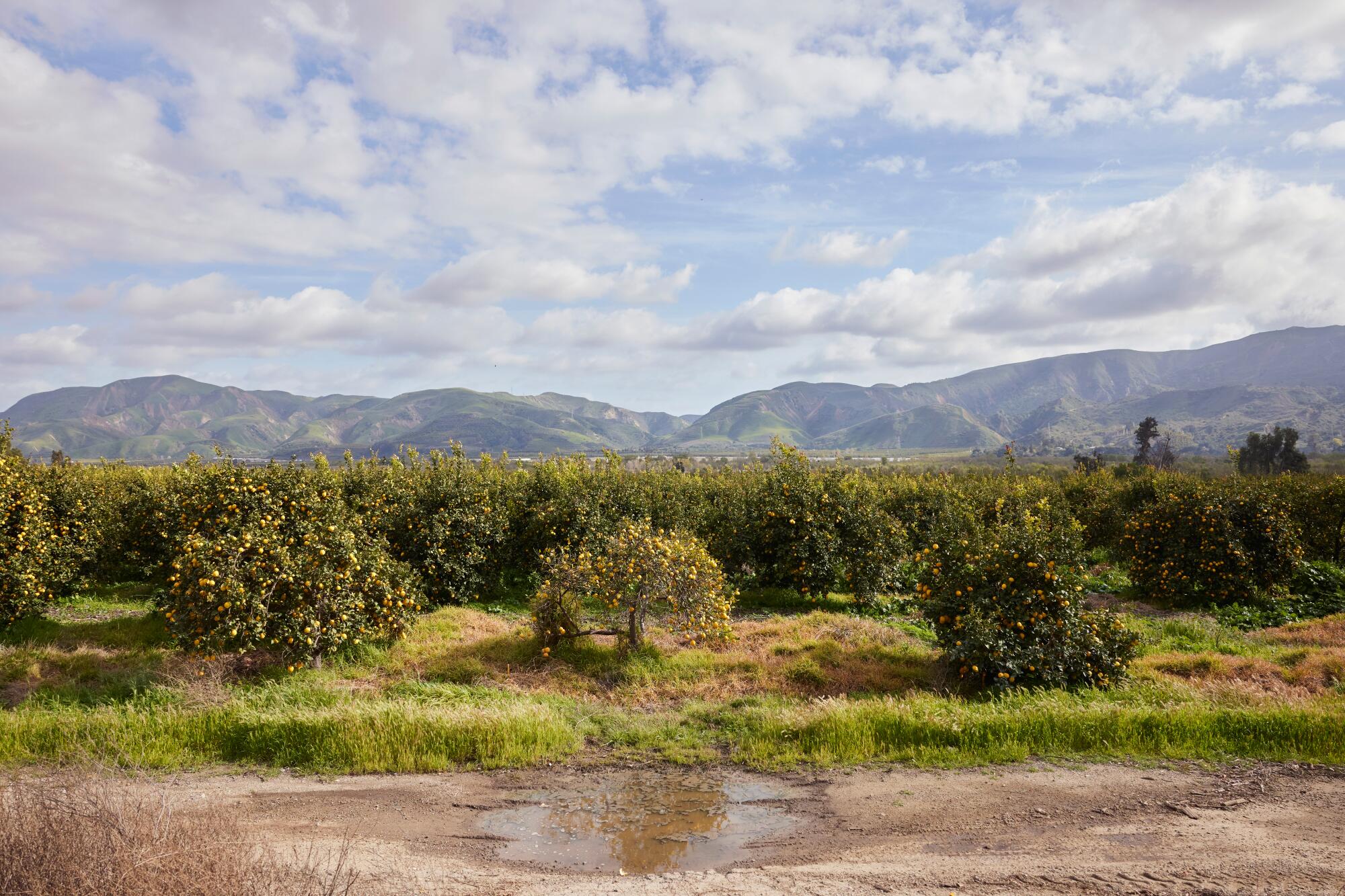
Mendocino Railway’s other tourism trains and railbikes include the popular Skunk Train in Fort Bragg and the monthly Boba Tea Train on the River Fox Line in West Sacramento. Eventually, Pinoli said, this Sunburst Train route will include “excursion-based passenger trains” that center around food and beverages local to Ventura County.
“We’re surrounded by lemons, by oranges, and [want] to embrace the produce that’s in this area and incorporate that into the train,” Pinoli said. “So it wouldn’t be a stretch to see maybe orange- or lemon-flavored citrus drinks, like if you want a margarita on the train we can squeeze the fruit for you fresh. Maybe chips and guacamole.”
As we pedaled our way out of Santa Paula, the homes and Del Tacos began to disappear. After about 15 minutes we arrived at Prancer’s Farm, where we had just enough time to browse either the farm store or the petting zoo.
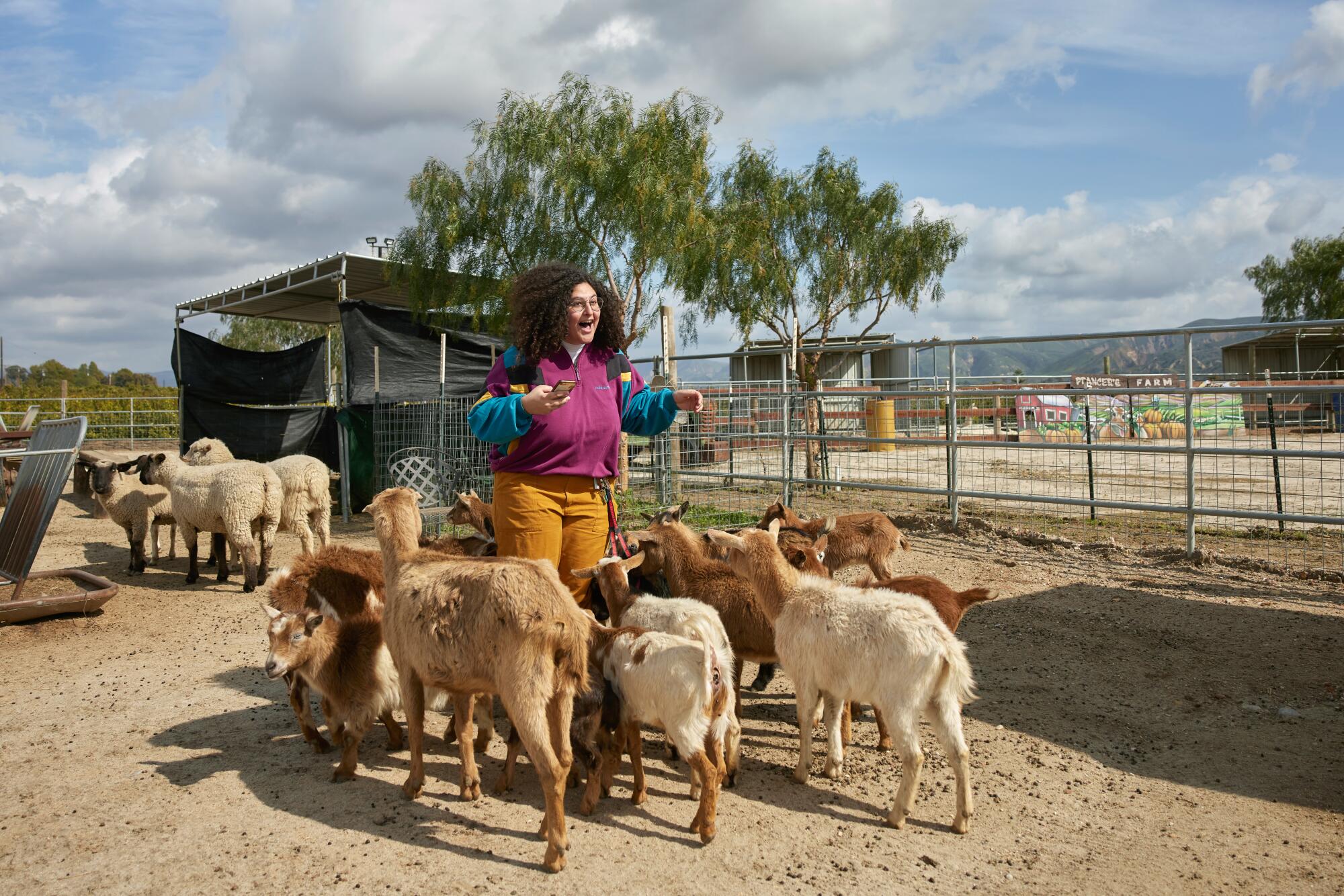
We chose petting goats and pigs over fresh strawberries, growing especially attached to a tiny goat my partner named Denzel (because Denzel Washington is also, famously, the G.O.A.T.).
Once we left Prancer’s, the views were especially beautiful. Suddenly the landscape was split into four layers: grass, citrus trees, mountains and an enticingly cloud-speckled sky. From afar, we even got a glimpse of some large patches of bright orange flowers.
Throughout the ride we passed over small bridges, modest waterfalls and a few bumpy spots. Most of the ride, our bike was set to the third gear, which brought us to about the speed limit with little to no peddling.

“We are restricted to a speed of 15 miles per hour on this line,” Pinoli said. “But these bikes can go anywhere from 25 to 30 miles an hour.”
Tourism railbikes, similar to the ones that Mendocino Railway runs, seemed to find their stride in 2020, as COVID-19 restrictions forced many people outdoors.
“It gives people the ability to get outside and reconnect with friends,” Pinoli said. “During the throes of COVID, we couldn’t build these fast enough. They were in such huge demand.”
Take me home, country (rail)roads
The appeal of riding on a railbike is similar to driving a convertible — you get to feel the wind and sun on your face — but traveling on a train track also means that nobody has to steer. And you don’t have to be a train enthusiast or an avid biker to enjoy the experience.
When we arrived at the turnaround point, where we were supposed to stop and have a picnic lunch, it became clear that the route hadn’t totally been finished.
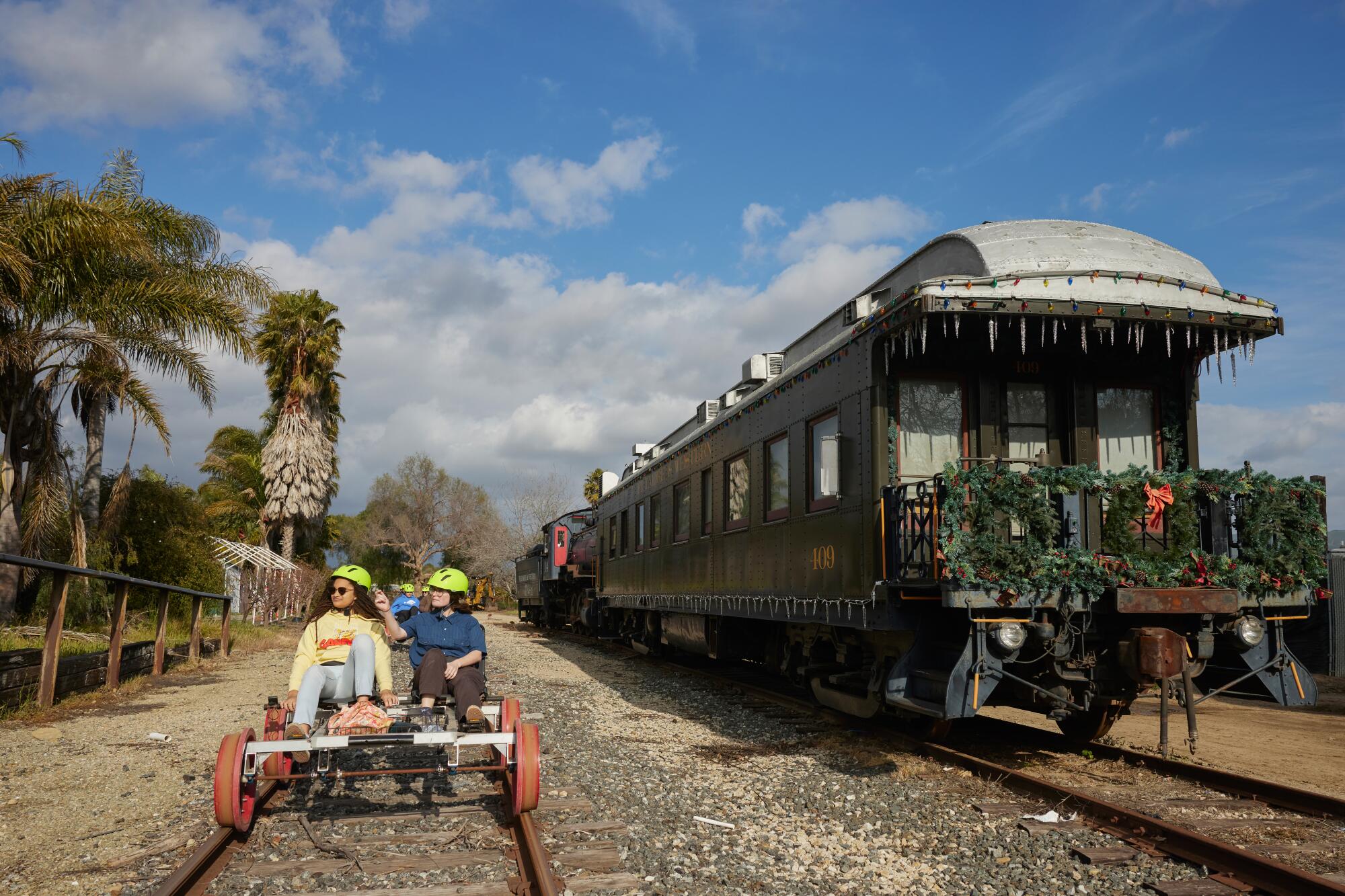
“Our picnic stop is abbreviated because there’s a bridge to the east that [was] washed out with the big storms in January, so we can’t cross over the river to get into Fillmore,” Pinoli said.
Once the storm damage is repaired, Pinoli said they’re hoping to pair with local vendors who could provide food at that halfway point. But because the picnics weren’t set up yet, I packed sandwiches (from a personal Culver City favorite, Monroe Place) that we ate on the ride back.
Pinoli added that they’re hoping to expand railbike tours beyond four days a week and eventually start running food-and-beverage-centered passenger trains along with the railbikes and freight.
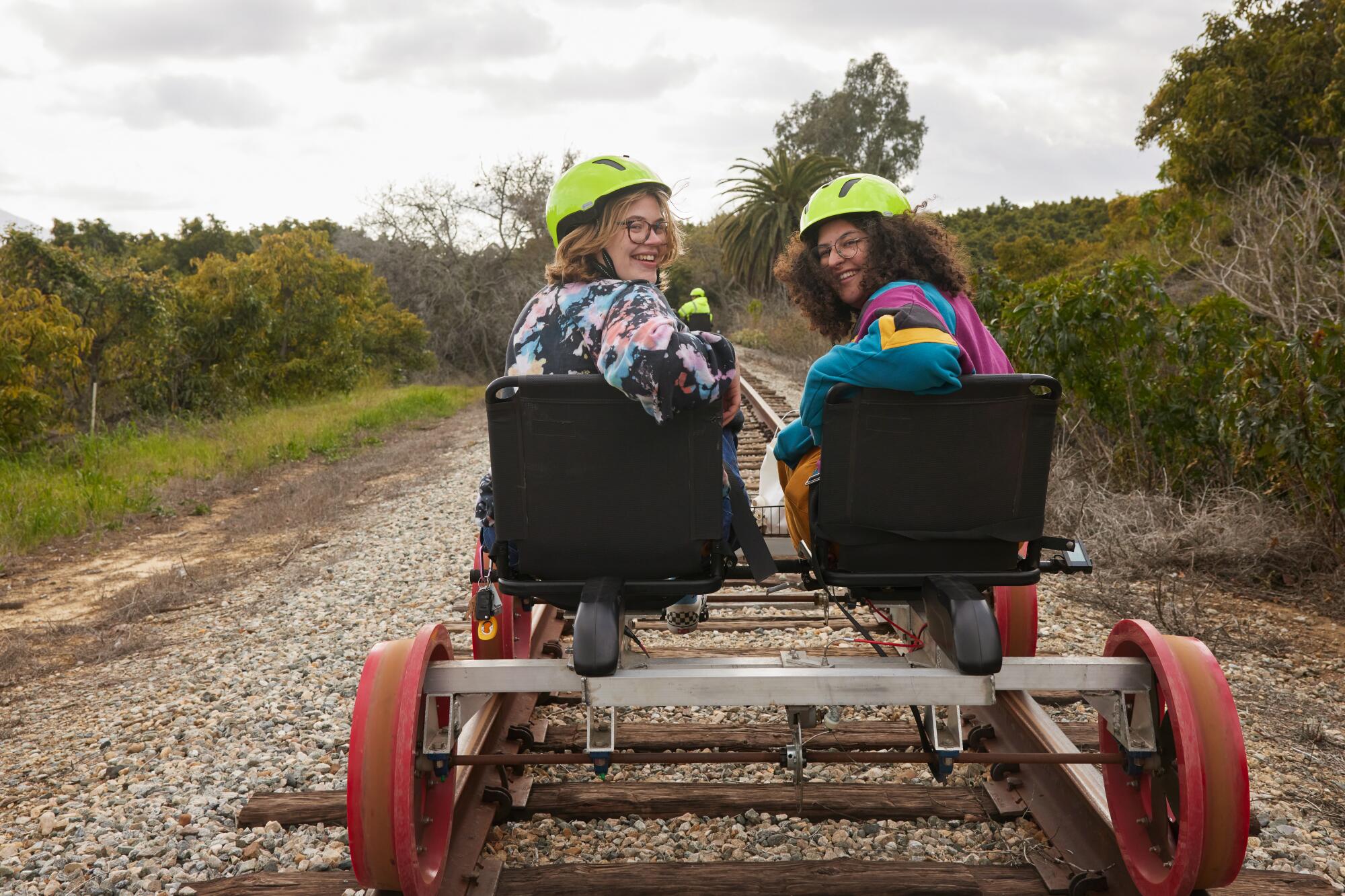
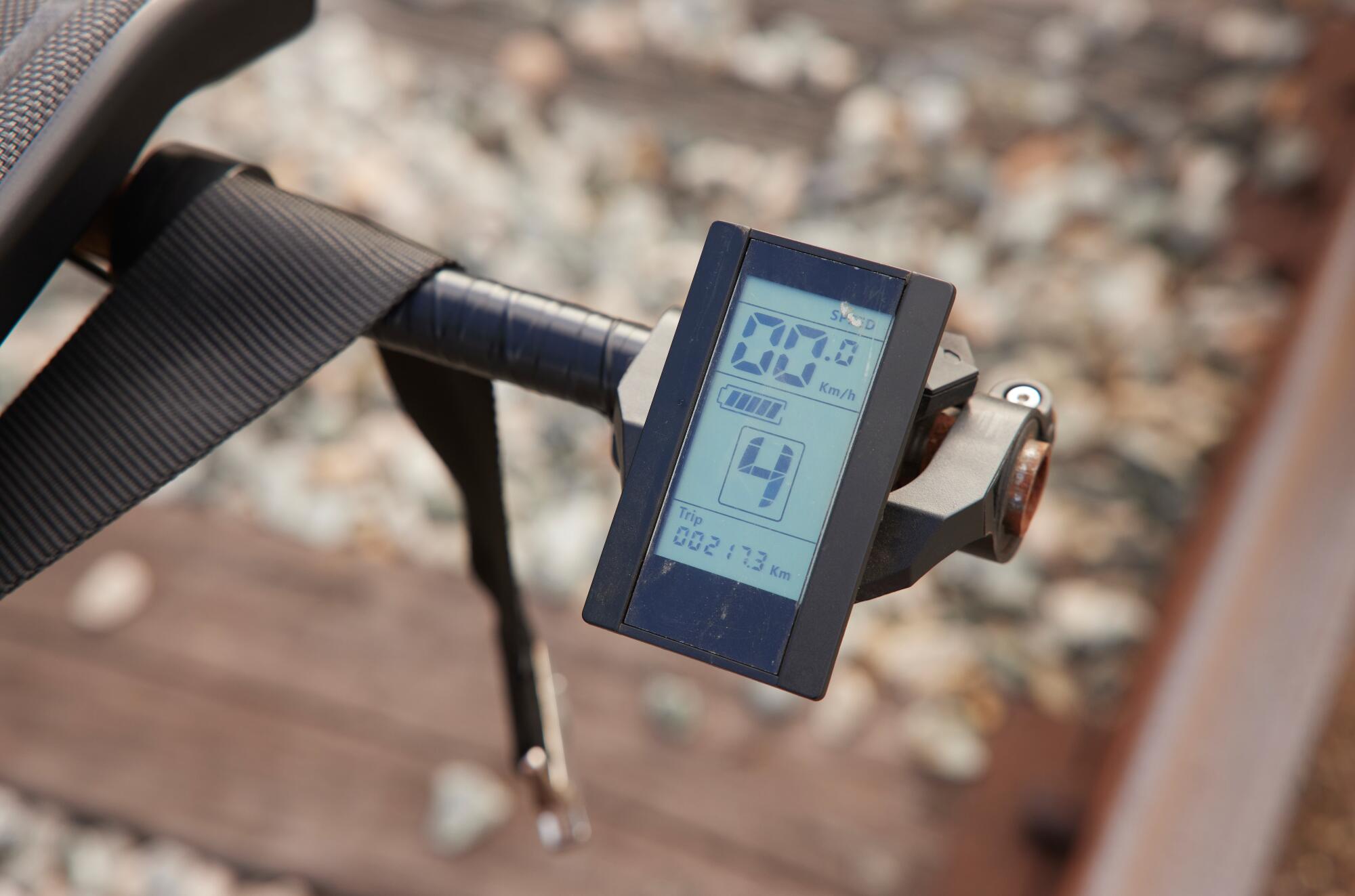
By the time we got back to Santa Paula, I was chilly enough that I was looking forward to getting back into my car. And even though I did minimal pedaling, I felt a sense of accomplishment when I returned my helmet to the seat.
Generally, I’m not particularly inclined to shell out more than $200 for an afternoon of biking, but I can understand the appeal for train lovers and people who enjoy marveling at the natural Southern California landscapes.
“Not to be cheesy, but I low-key get what they were talking about in ‘America the Beautiful,’” my partner said as we gazed at the mountains. I let them revel in that feeling for a minute before informing them that ‘America the Beautiful’ was actually inspired by Pikes Peak in Colorado.
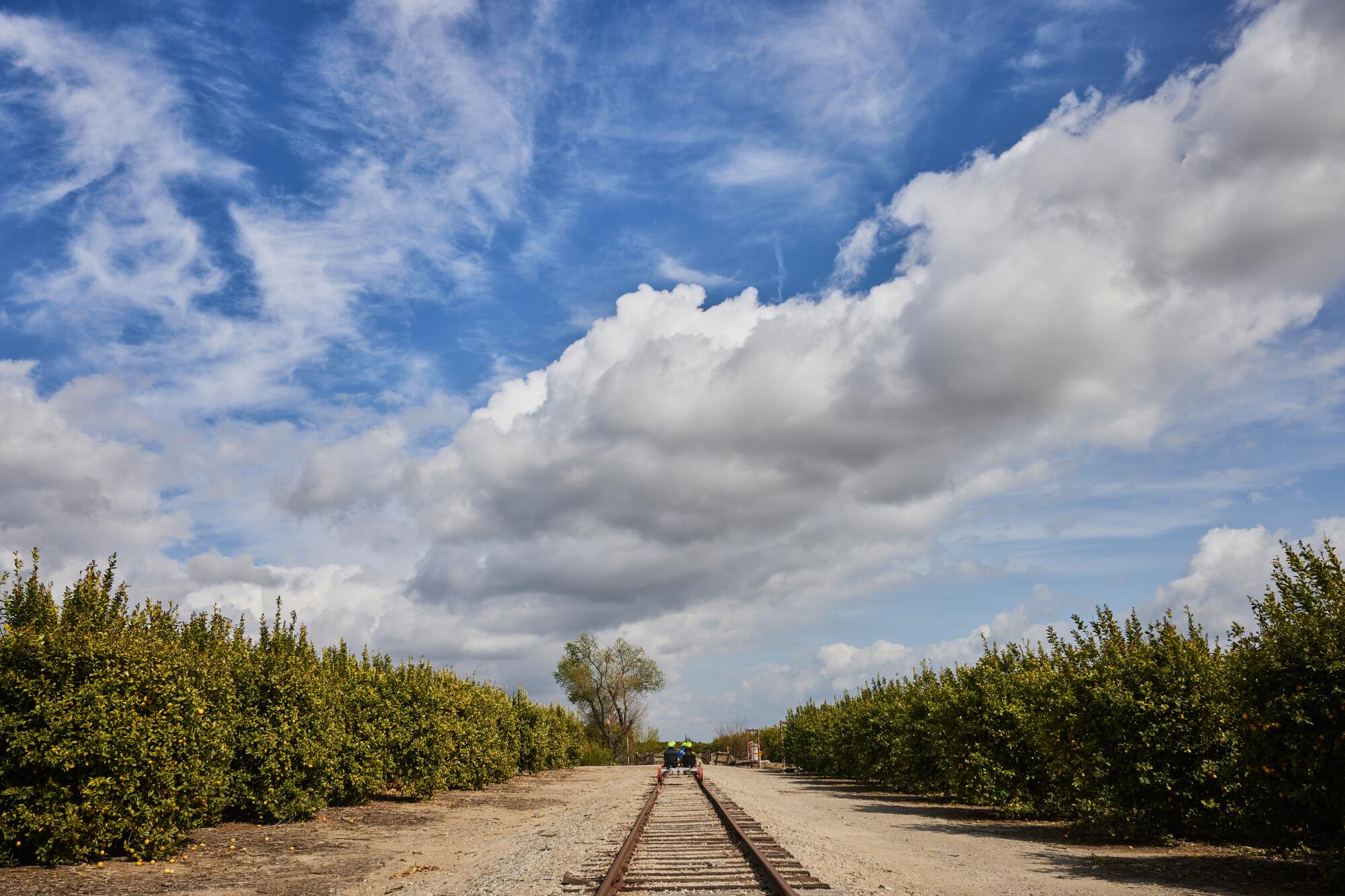
- Share via
Watch L.A. Times Today at 7 p.m. on Spectrum News 1 on Channel 1 or live stream on the Spectrum News App. Palos Verdes Peninsula and Orange County viewers can watch on Cox Systems on channel 99.
More to Read
Sign up for The Wild
We’ll help you find the best places to hike, bike and run, as well as the perfect silent spots for meditation and yoga.
You may occasionally receive promotional content from the Los Angeles Times.

